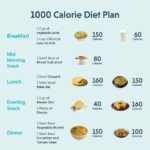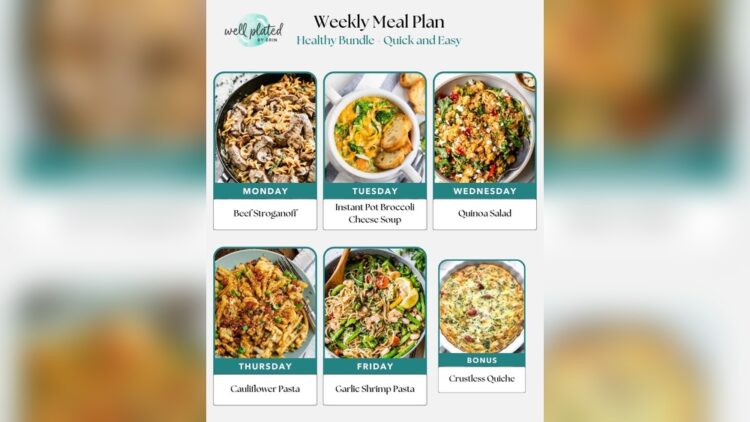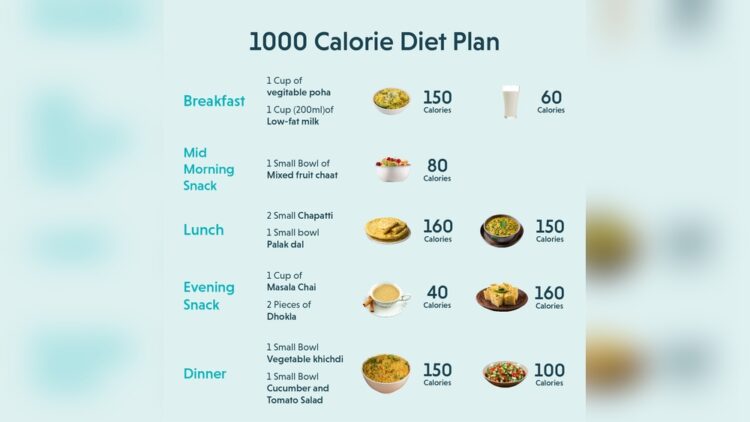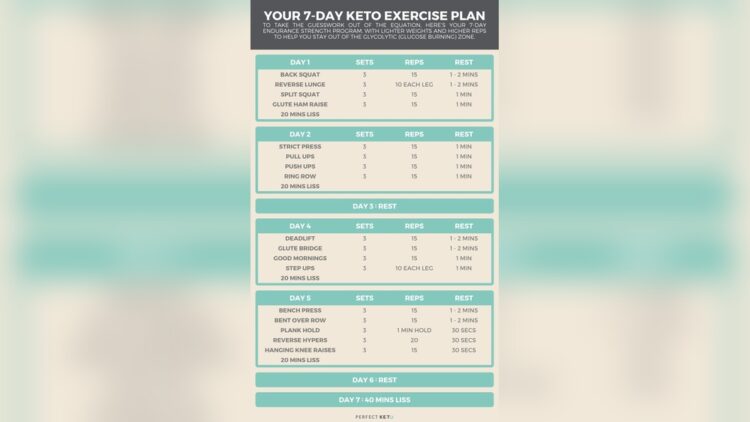To begin a weight loss journey, focus on a balanced diet and regular exercise. Incorporate healthy eating habits and physical activities into your daily routine.
Are you looking to shed those extra pounds and embark on a weight loss journey? With so much information available, it can be overwhelming to find the right approach. However, starting your journey doesn’t have to be complicated. By following some simple steps, you can establish healthy habits that will aid in your weight loss goals.
We will explore the essential elements of a successful weight loss journey. From nutritious eating to incorporating exercise, we’ll provide practical tips to help you get started on your path to a healthier lifestyle. Get ready to transform your body and boost your well-being.
Setting Your Weight Loss Goals
When embarking on a weight loss journey, setting clear goals is crucial to your success. These goals give you focus and motivation, as well as provide a roadmap for your progress. In this article, we will discuss how to effectively set your weight loss goals, with a specific focus on determining your ideal weight and breaking down your goals into manageable steps.
Determining Your Ideal Weight
To begin your weight loss journey, it’s important to determine your ideal weight. This is the weight range that is healthy for your height, age, and sex. Determining your ideal weight helps you set a realistic and achievable goal that aligns with your overall health and wellbeing.
One way to determine your ideal weight is by calculating your body mass index (BMI), a measure of body fat based on your height and weight. Use the following formula:
Once you have calculated your BMI, refer to a BMI chart to identify the range that corresponds to a healthy weight for you. Keep in mind that while BMI is a useful indicator, it doesn’t take into account factors such as muscle mass. Consulting with a healthcare professional can provide additional guidance.
Breaking Down Your Goals
After determining your ideal weight, it’s important to break down your weight loss goals into smaller, more achievable steps. This allows you to track your progress more effectively and stay motivated along the way. Here are some tips for breaking down your weight loss goals:
- Set specific targets: Break your overall weight loss goal into smaller monthly or weekly targets. For example, aim to lose 1-2 pounds per week or 4-8 pounds per month.
- Focus on behavior changes: Instead of solely focusing on the number on the scale, set goals related to your behavior. For example, aim to incorporate more fruits and vegetables into your diet or exercise for 30 minutes each day.
- Celebrate milestones: Celebrate your achievements along the way to stay motivated. For every milestone reached, reward yourself with something non-food related, such as a new workout gear or a spa day.
By breaking down your weight loss goals into smaller, more manageable steps, you can create a plan that is realistic and attainable. Remember, consistency and patience are key, and your progress might not always be linear. Stay focused, stay positive, and stay committed to your journey towards a healthier you.
Creating A Balanced Meal Plan
Creating a balanced meal plan is crucial for a successful weight loss journey. By incorporating healthy and nutritious foods, you can optimize your calorie intake and achieve your goals.
Creating a Balanced Meal Plan When embarking on a weight loss journey, one of the crucial factors to consider is creating a balanced meal plan. This involves understanding macronutrients, portion control, and meal timing. By incorporating these elements into your meal plan, you can optimize your weight loss efforts and establish healthy eating habits that will support your long-term goals. H3: Understanding Macronutrients To create a balanced meal plan, it is essential to understand the role of macronutrients in your diet. Macronutrients include carbohydrates, proteins, and fats. Each of these nutrients plays a vital role in providing energy and maintaining various bodily functions. Here’s a breakdown of these macronutrients: 1. Carbohydrates: These are the body’s primary source of energy and can be found in foods such as grains, fruits, and vegetables. Opt for complex carbohydrates like whole grains and limit your intake of refined sugars. 2. Proteins: Proteins are necessary for muscle growth and repair. Include lean sources such as chicken, fish, tofu, and legumes in your meal plan. These will help you feel full and satisfied for longer periods. 3. Fats: Healthy fats, such as those found in avocados, nuts, and olive oil, are essential for maintaining hormonal balance and supporting brain function. Incorporate these fats in moderation to ensure a well-rounded diet. H3: Portion Control and Meal Timing In addition to understanding macronutrients, portion control and meal timing are crucial aspects of a balanced meal plan. Here’s how you can incorporate these elements into your routine: 1. Portion Control: – Use smaller plates and bowls to help control portion sizes. – Focus on eating until you feel satisfied rather than stuffed. – Be mindful of portion sizes when dining out, as restaurant servings are often larger than necessary. 2. Meal Timing: – Aim to eat regular meals and snacks throughout the day to maintain stable blood sugar levels. – Avoid skipping meals, as this can lead to overeating later in the day. – Plan your meals and snacks ahead of time to ensure a balanced intake of nutrients. Remember, creating a balanced meal plan is not about deprivation but rather finding the right balance of nutrients to support your body’s needs. Consult a registered dietitian or nutritionist if you need personalized guidance in creating a meal plan that suits your specific requirements. Incorporating a balanced meal plan into your weight loss journey will not only help you shed pounds but also promote overall health and well-being. By understanding macronutrients, practicing portion control, and being mindful of meal timing, you can establish healthy habits that contribute to your long-term success. So, take the first step towards a healthier you by creating a meal plan that nourishes both your body and your weight loss goals.Incorporating Exercise Into Your Routine
When it comes to weight loss, incorporating exercise into your routine is essential. Making physical activity a regular part of your day not only helps you burn calories but also strengthens your muscles and boosts your metabolism. In this article, we will discuss the importance of choosing the right type of exercise and creating a workout schedule for effective weight loss.
Choosing The Right Type Of Exercise
Choosing the right type of exercise is crucial for achieving your weight loss goals. It’s important to select activities that you enjoy to ensure you stay motivated and committed. Here are a few options to consider:
| Exercise Type | Description |
|---|---|
| Aerobics | Engage in activities that increase your heart rate, such as running, cycling, or dancing. Aerobic exercises aid in burning calories and improving cardiovascular health. |
| Strength Training | Add weightlifting or resistance training to your routine to build lean muscle mass. This helps increase your metabolism as muscle burns more calories than fat. |
| Yoga or Pilates | These low-impact exercises focus on flexibility, balance, and core strength. They help improve posture, reduce stress, and enhance overall body tone. |
Creating A Workout Schedule
Creating a workout schedule is vital to ensure consistency and progress in your weight loss journey. It helps you stay committed and accountable to your fitness goals. Here’s a simple guide to creating a workout schedule:
- Set Realistic Goals: Begin by setting realistic exercise goals that align with your current fitness level. Start with achievable targets and gradually increase intensity and duration over time.
- Choose a Time: Identify a time slot that works best for you and fits into your daily routine. Whether it’s early mornings, during lunch breaks, or evenings, select a time when you’re most likely to stick to your exercise plan.
- Diversify Your Routine: Vary your workouts to prevent boredom and engage different muscle groups. Alternate between cardiovascular exercises, strength training, and stretching or include different activities like swimming or hiking.
- Be Consistent: Aim for at least 150 minutes of moderate-intensity aerobic activity or 75 minutes of vigorous-intensity activity per week, as recommended by health professionals. Additionally, incorporate strength training exercises at least twice a week.
- Track Your Progress: Keep a record of your workouts, noting the exercises, duration, and any improvements you observe. Tracking your progress not only motivates you but also helps you make necessary adjustments to your workout routine.
Staying Motivated And Overcoming Challenges
Embarking on a weight loss journey can be exciting and motivating at the beginning, but as time goes on, it’s common to face challenges that may dampen your spirits. Thankfully, with the right strategies, you can stay motivated and overcome these obstacles, keeping you on track towards your weight loss goals. This section will cover key aspects of staying motivated and dealing with challenges, such as finding and maintaining motivation, and how to handle plateaus and setbacks.
Finding And Maintaining Motivation
When it comes to weight loss, finding and maintaining motivation is crucial for long-term success. Here are a few strategies to keep you motivated:
- Set achievable goals: Start by setting realistic and attainable goals. Break them down into smaller milestones, making your progress measurable and providing a sense of accomplishment along the way.
- Find your “why”: Determine the underlying reasons why you want to lose weight. Whether it’s to improve your health, gain more confidence, or enhance your overall well-being, reminding yourself of your motivations can help you stay focused.
- Track your progress: Keep track of your progress using a weight loss journal or a mobile app. Documenting your journey visually and writing down your achievements can boost your motivation and help you identify any areas that need improvement.
- Surround yourself with support: Share your weight loss goals with friends, family, or join a support group. Having a support system can provide you with encouragement, accountability, and valuable advice.
Dealing With Plateaus And Setbacks
During your weight loss journey, you might experience plateaus and setbacks. Here’s how to handle them:
- Stay patient: Recognize that weight loss is not linear. Plateaus are normal and can last for weeks. Stay patient and trust the process. Focus on the positive changes you’ve made to your lifestyle.
- Review your routine: If you’ve hit a plateau, it may be time to review your routine. Analyze your eating habits, exercise regimen, and sleep patterns. Look for areas where you can make improvements or try new strategies to break through the plateau.
- Reframe setbacks as learning opportunities: Instead of viewing setbacks as failures, see them as learning opportunities. Identify the triggers that led to the setback and develop strategies to avoid similar situations in the future. Remember, setbacks are just bumps on the road to success.
- Seek professional guidance: If you’re consistently struggling with plateaus or setbacks, consider seeking guidance from a registered dietitian or a certified personal trainer. They can provide personalized advice and help you navigate through challenges.
Remember, staying motivated and overcoming challenges is an integral part of your weight loss journey. By applying these strategies and maintaining a positive mindset, you can stay on course and achieve your weight loss goals.
Building A Support System
Embarking on a weight loss journey can be challenging, but building a strong support system is crucial. Surrounding yourself with encouraging friends, family, and professionals can provide accountability and motivation throughout your journey.
Embarking on a weight loss journey can be challenging, which is why it’s crucial to build a strong support system. Having the right people by your side can provide the motivation, encouragement, and accountability you need to stay on track. In this article, we’ll explore two effective ways to build a support system: enlisting the support of friends and family, and joining weight loss communities.
Enlisting The Support Of Friends And Family
When it comes to achieving any goal, having a solid support system is vital. Family and friends who understand and support your weight loss journey can make all the difference. Here are some steps you can take to enlist their support:
- Openly communicate your weight loss goals and reasons for pursuing them.
- Ask them to join you in your journey or simply request their support and encouragement.
- Request their assistance in creating a healthy, supportive environment by keeping tempting foods out of sight.
- Engage in physical activities together such as walking, jogging, or joining fitness classes.
- Share healthy recipes and meals with each other.
- Hold each other accountable by regularly checking in on progress and setbacks.
- Celebrate milestones and successes together, creating a positive and motivating atmosphere.
Joining Weight Loss Communities
Another effective way to build a support system is by joining weight loss communities. These communities are filled with individuals who are on a similar journey, facing similar challenges, and striving for the same goal of losing weight. Here’s why joining weight loss communities can be beneficial:
- Find a sense of belonging and understanding among like-minded individuals.
- Share tips, insights, and experiences with others who have gone through or are going through similar struggles.
- Gain inspiration and motivation from success stories and achievements of fellow members.
- Receive guidance and advice from professionals and experts within the community.
- Participate in challenges, group activities, and supportive discussions.
- Celebrate each other’s victories, no matter how big or small, fostering a supportive and encouraging environment.
Building a support system can make your weight loss journey more enjoyable, manageable, and ultimately successful. By enlisting the support of friends, family, and weight loss communities, you’ll have the backing you need to stay focused and motivated. Remember, connecting with others who share your goals can turn your weight loss journey into a collective effort towards a healthier lifestyle.
Frequently Asked Questions On How To Go On A Weight Loss Journey
How Can I Start My Weight Loss Journey Effectively?
To start your weight loss journey effectively, set realistic goals, create a meal plan, and engage in regular exercise.
What Are Some Essential Tips For A Successful Weight Loss Journey?
To have a successful weight loss journey, stay consistent, stay motivated, drink plenty of water, and keep track of your progress.
Are There Any Specific Foods I Should Avoid During My Weight Loss Journey?
During your weight loss journey, it’s best to avoid sugary drinks, processed foods, fried foods, and excessive intake of carbohydrates.
Conclusion
Embarking on a weight loss journey can be challenging, but with determination and a solid plan, you can achieve your goals. Remember to focus on healthy habits, such as regular exercise and nutritious eating, while staying consistent and patient. Surround yourself with a supportive community and celebrate small victories along the way.
By making these positive changes and maintaining a positive mindset, you can not only lose weight, but also improve your overall well-being. Start your journey today and see the transformative effects it can have on your life.
{ “@context”: “https://schema.org”, “@type”: “FAQPage”, “mainEntity”: [ { “@type”: “Question”, “name”: “How can I start my weight loss journey effectively?”, “acceptedAnswer”: { “@type”: “Answer”, “text”: “To start your weight loss journey effectively, set realistic goals, create a meal plan, and engage in regular exercise.” } } , { “@type”: “Question”, “name”: “What are some essential tips for a successful weight loss journey?”, “acceptedAnswer”: { “@type”: “Answer”, “text”: “To have a successful weight loss journey, stay consistent, stay motivated, drink plenty of water, and keep track of your progress.” } } , { “@type”: “Question”, “name”: “Are there any specific foods I should avoid during my weight loss journey?”, “acceptedAnswer”: { “@type”: “Answer”, “text”: “During your weight loss journey, it’s best to avoid sugary drinks, processed foods, fried foods, and excessive intake of carbohydrates.” } } ] }











Leave a Reply